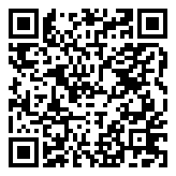Designing an integrated chatbot for the sales department: enhancing the user experience using the design thinking methodology, Peru
DOI:
https://doi.org/10.53732/rccsociales/e701125Keywords:
Chatbots, user experience, design thinking, human-computer interaction (hci), retail trade, information systemsAbstract
The aim of this study was to design and implement a WhatsApp chatbot to optimize real-time access to key information (prices, stock, and sizes) for sales consultants in retail stores in Lima, Peru. A qualitative approach was employed using the Design Thinking methodology, which involved the empathy phase through interviews with 12 sales consultants, ideation and prototyping with no-code tools (Make and WhatsApp Cloud API), and validation through a heuristic evaluation conducted by a retail and automation expert. The findings revealed improvements in operational efficiency, reduced information retrieval time, and high frequency of chatbot use among consultants. In conclusion, the integration of chatbots into the retail sales environment shows significant potential to enhance the in-store experience and support commercial decision-making. Future research is encouraged to evaluate its quantitative impact on sales performance and customer satisfaction.
References
Aflatoony, L., Perkins, M., Waldrop, D., & Hepburn, K. (2021). Design thinking as a method for developing caregiver (and other) interventions. Innovation in Aging, 5(Suppl. 1), 393. https://doi.org/10.1093/geroni/igab046.1530
Ajimati, M. O., Carroll, N., & Maher, M. (2025). Adoption of low-code and no-code development: A systematic literature review and future research agenda. Journal of Systems and Software, 222, 112300. https://doi.org/10.1016/j.jss.2024.112300
Cho, H., Keenan, G., Madandola, O. O., Dos, C., Macieira, T. G. R., Bjarnadottir, R. I., Priola, K. J. B., & Lopez, K. D. (2022). Assessing the usability of a clinical decision support system: Heuristic evaluation. JMIR Human Factors, 9(2), e31758. https://doi.org/10.2196/31758
Christianto, V., & Smarandache, F. (2024). The convergence of Ikigai and design thinking: Crafting a purposeful framework. Sustainable Machine Intelligence Journal, 7. https://doi.org/10.61356/smij.2024.77101
Cordero, J., Barba-Guamán, L., & Guamán, F. (2022). Use of chatbots for customer service in MSMEs. Applied Computing and Informatics. https://doi.org/10.1108/ACI-06-2022-0148
Ghosh, S., Ness, S., & Salunkhe, S. (2024). El papel de los chatbots habilitados para IA en el servicio al cliente omnicanal. Revista de Investigación e Informes de Ingeniería, 26(6), 1184–1196. https://doi.org/10.9734/jerr/2024/v26i61184
Hamza Ed-douibi, L., Luis, J., Daniel, G., & Cabot, J. (2021). A model-based chatbot generation approach to converse with open data sources. In Lecture Notes in Computer Science (pp. 440–455). Springer. https://doi.org/10.1007/978-3-030-74296-6_33
Iba, T., & Kimura, N. (2023). Practice coding with a pattern language: A case study of coding with a pattern language for value-creation marketing. In Proceedings of the 28th European Conference on Pattern Languages of Programs (pp. 1–13). ACM. https://doi.org/10.1145/3628034.3628049
Kenny, U., Regan, Á., Hearne, D., & O’Meara, C. (2021). Empathising, defining and ideating with the farming community to develop a geotagged photo app for smart devices: A design thinking approach. Agricultural Systems, 194, 103248. https://doi.org/10.1016/j.agsy.2021.103248
Mzwri, K., & Turcsányi-Szabó, M. (2023). Chatbot development using APIs and integration into the MOOC. Revista Centroeuropea de Nuevas Tecnologías en Investigación, Educación y Práctica, 5(1), 470–491. https://doi.org/10.36427/cejntrep.5.1.5041
Naqvi, M., Zhang, H., Naqvi, M., & Kun, L. (2023). Impact of service agents on customer satisfaction and loyalty: Mediating role of chatbots. Journal of Modelling in Management, 19(2), 353–370. https://doi.org/10.1108/jm2-01-2023-0004
Olavarría J., Cambra F., & Arditto D.. (2020). Relevance of salespeople profiles: An analysis in an emerging economy. Marketing Intelligence & Planning, 38(6), 747–761. https://doi.org/10.1108/MIP-04-2019-0230
Olorunfemi, D. (2023). Diary studies in research: More than a research method. International Journal of Market Research, 66(4), 410–427. https://doi.org/10.1177/14707853231222139
Peter, E., Friedland, J., & McFarlane, J. (2015). The ethics in qualitative health research: special considerations. Ciência & Saúde Coletiva, 20(9), 2625–2630. https://doi.org/10.1590/1413-81232015209.06762015
Ramos De Santis, P. (2024). Satisfacción del cliente en la logística: un análisis de chatbots en las empresas líderes de Colombia, Perú y Ecuador. Retos. Revista de Ciencias de la Administración y Economía, 14(27), 115-130. https://doi.org/10.17163/ret.n27.2024.08
Shah, M., Jactat, B., Yasui, T., & Ismailov, M. (2023). Low-fidelity prototyping with design thinking in higher education management in Japan: Impact on the utility and usability of a student exchange program brochure. Education Sciences, 13(1), 53. https://doi.org/10.3390/educsci13010053
Shé, N., Farrell, O., Brunton, J., & Costello, E. (2022). Integrating design thinking into instructional design: The #OpenTeach case study. Australasian Journal of Educational Technology, 38(1), 33–52. https://doi.org/10.14742/ajet.6667
Steinert, M., Isa, S., Jamaludin, N., & Liem, A. (2024). Investigating the correlation between visual representation flow, physical prototyping, and designers’ creativity. The Design Journal, 27(5), 954–975. https://doi.org/10.1080/14606925.2024.2378574
Tate, R., Beauregard, F., Peter, C., & Marotta, L. (2023). Pilot testing as a strategy to develop interview and questionnaire skills for scholar practitioners. Impacting Education: Journal on Transforming Professional Practice, 8(4), 20–25. https://doi.org/10.5195/ie.2023.333
Wenngren, J., & Rizk, A. (2024). Prototyping for digital innovation: Investigating the impact of digital technology on prototyping elements. Administrative Sciences, 14(7), 142. https://doi.org/10.3390/admsci14070142
Zhu, J., Jiang, Y., Wang, X., & Huang, S. (2023). Social- or task-oriented: How does social crowding shape consumers’ preferences for chatbot conversational styles? Journal of Research in Interactive Marketing, 17(5), 641–662. https://doi.org/10.1108/jrim-01-2022-0007
Additional Files
Published
How to Cite
Issue
Section
License
Copyright (c) 2025 Carmen Chieng Cueva, Jeferson Pinedo Reynoso

This work is licensed under a Creative Commons Attribution 4.0 International License.



1.png)






















 Todo el contenido de esta revista, está bajo
Todo el contenido de esta revista, está bajo 